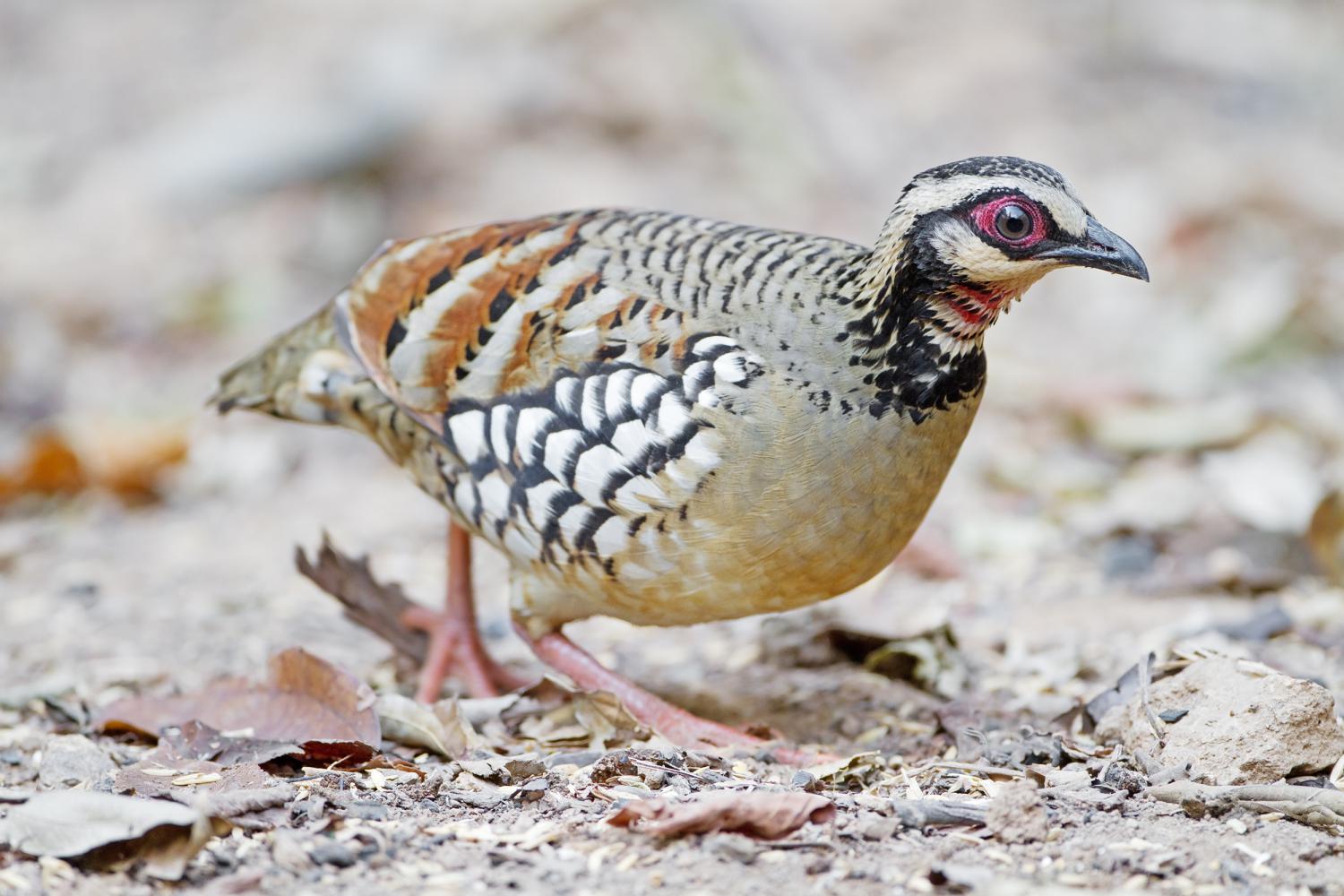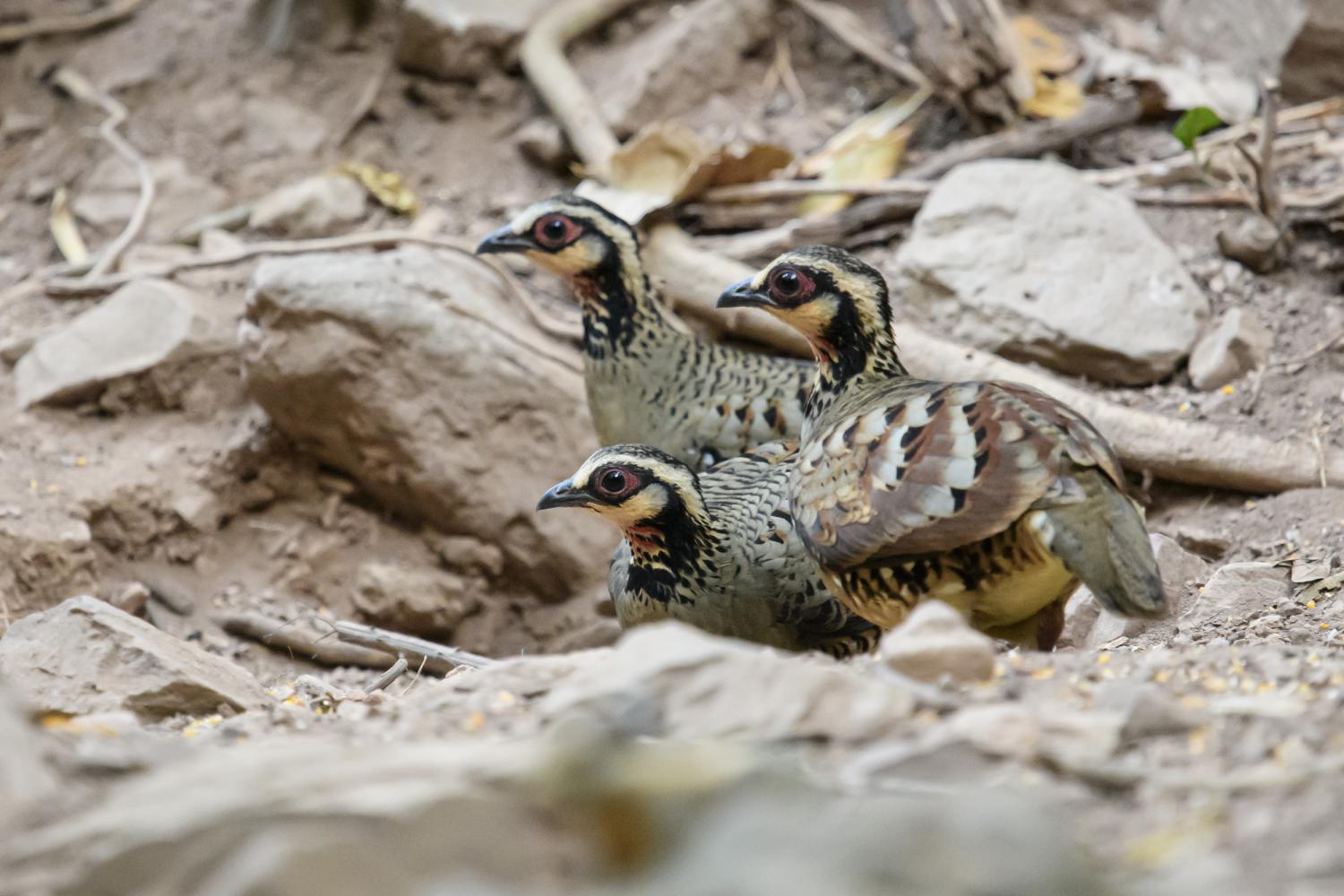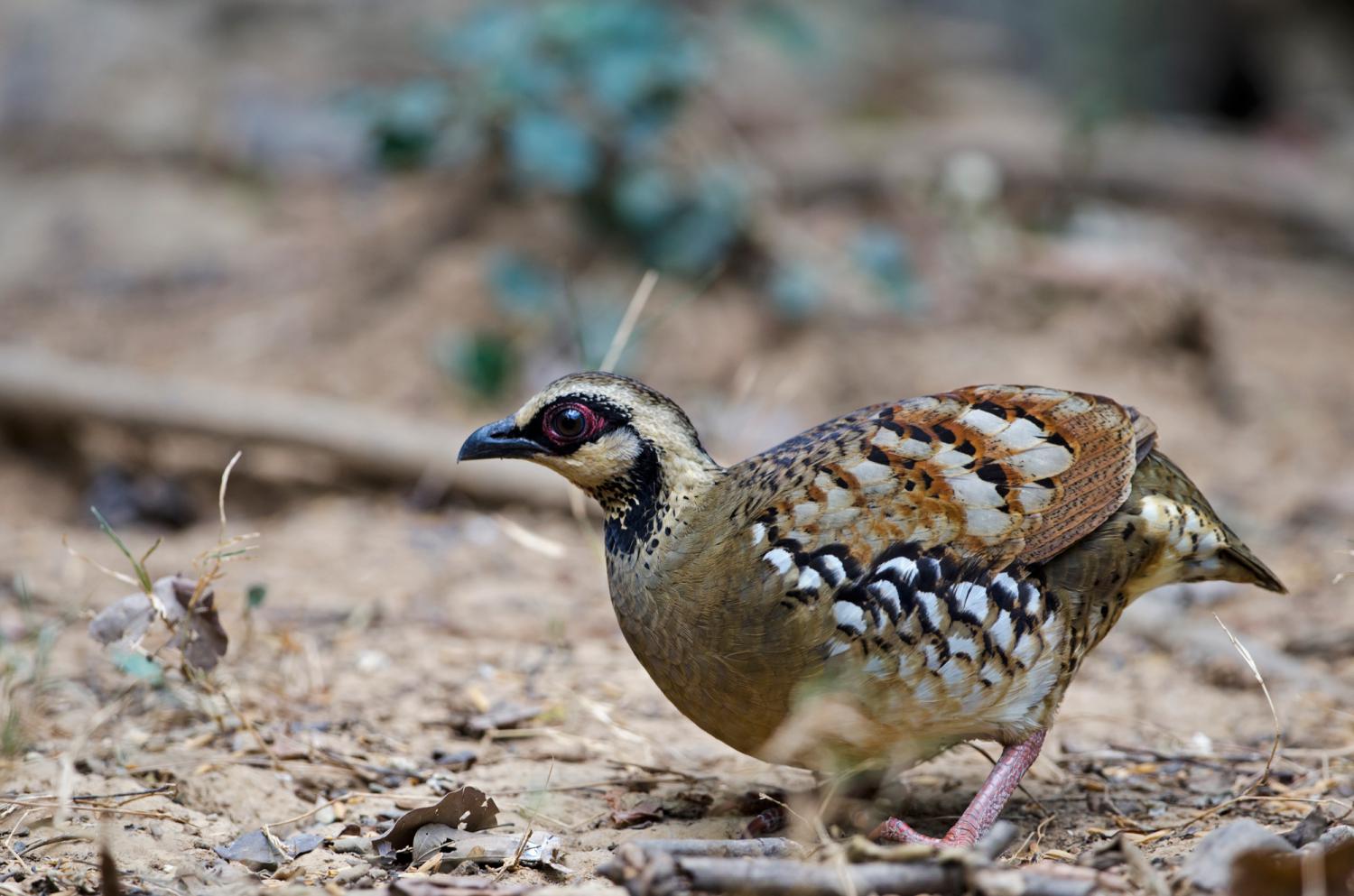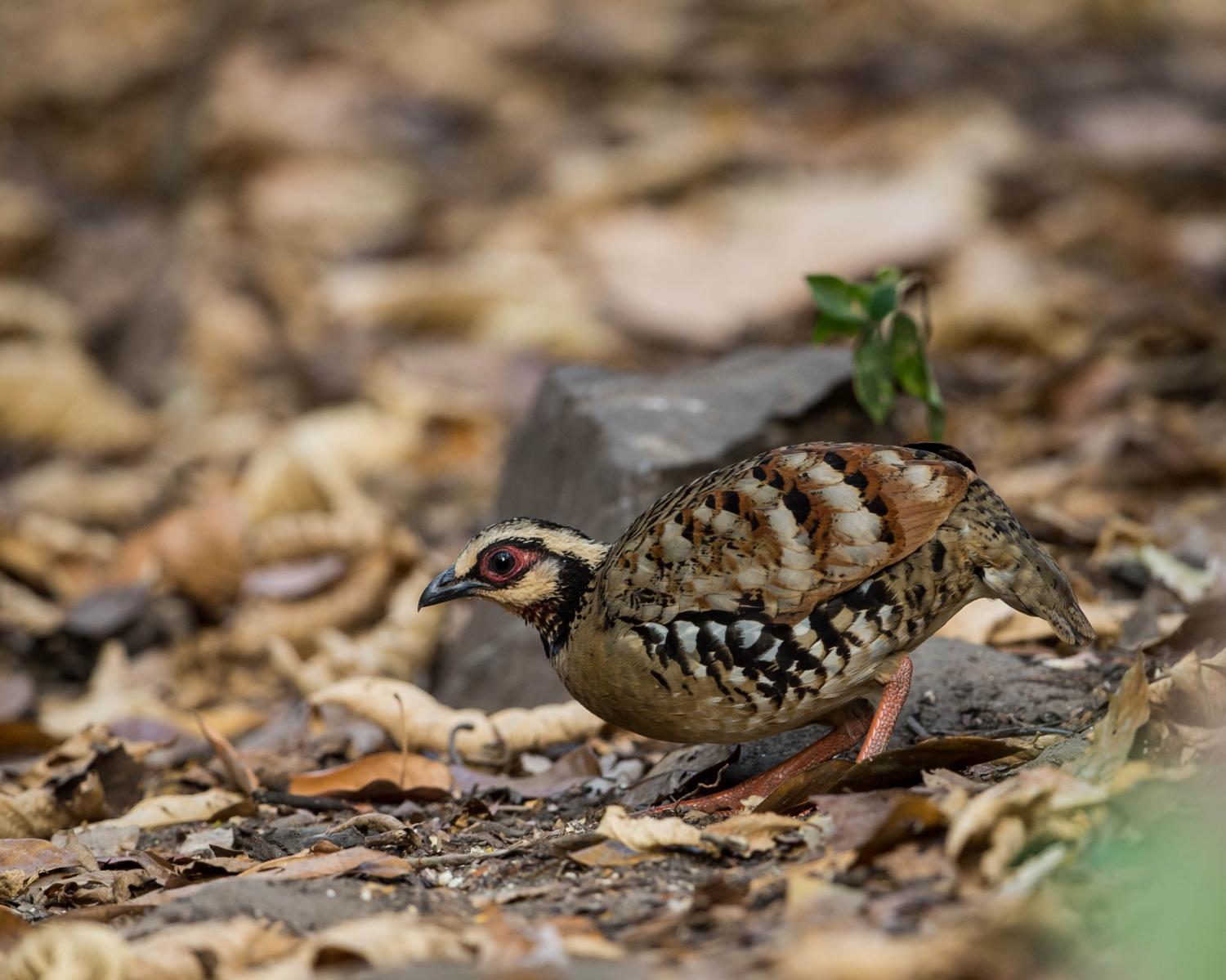Species of Thailand
Bar-backed partridge
Arborophila brunneopectus
Edward Blyth, 1855
In Thai: นกกระทาดงอกสีน้ำตาล
The bar-backed partridge (Arborophila brunneopectus), also known as the brown-breasted hill-partridge, is a species of partridge in the family Phasianidae. It is found in southwestern China and Southeast Asia.
Taxonomy
English zoologist Edward Blyth first described the bar-backed partridge in 1855. It has three subspecies: A. b. brunneopectus, described by Blyth in 1855; A. b. henrici, described by Émile Oustalet in 1896; and A. b. albigula, described by Cecil Boden Kloss and Herbert Christopher Robinson in 1919. These subspecies differ in colouration and patterns of their underparts and head, respectively. Some identify the chestnut-bellied partridge and grey-breasted partridge or even the Sichuan partridge or red-breasted partridge as superspecies of the bar-backed partridge.
Description
The bar-backed partridge is typically 280 mm long in total, with an average wingspan of 144 mm for males and 134 mm for females of the species. They usually have 6 - 7 cm tails, and their bills are about 20 - 21 mm in length. On average, males have a 42 mm tarsus, while females have 39 mm.
The males are similar in color to females. It is mostly buff in color, with black running from the beak, around the eyes, and to the throat, as well as a black crown and feather tips along its back. It has red eyelids, and its wing feathers are white with black tips, adding brown near the back of the bird.
Distribution and habitat
The bar-backed partridge is found in Cambodia, China, Laos, Myanmar, Thailand, and Vietnam over an estimated 486000 km2.
Its natural habitats are subtropical or tropical moist lowland forests and subtropical or tropical moist montane forests. It is typically found at relatively low elevations, under 3000, but have been seen at 5000 and above.
Behaviour
They flock in groups of about 4–9, usually consisting of two parents and their latest offspring or sometimes two families. They feed on seeds, small shells, and insects found in leaves on the forest floor. When disturbed by humans, they quickly scatter into the underbrush. Captive male bar-backed partridges attract a mate by exposing the red feathers around their throat and calling. They breed around May to June, and their 37 by 28 mm eggs are usually laid in a hole covered with bamboo and grass.
Status
The bar-backed partridge has been evaluated as Least Concern by the IUCN due to its large range; however, its population is slowly declining because of habitat loss and hunting, although this decline is not steep enough to make it Vulnerable.
This article uses material from Wikipedia released under the Creative Commons Attribution-Share-Alike Licence 3.0. Eventual photos shown in this page may or may not be from Wikipedia, please see the license details for photos in photo by-lines.
Category / Seasonal Status
BCST Category: Recorded in an apparently wild state within the last 50 years
BCST Seasonal status: Resident or presumed resident
Scientific classification
- Kingdom
- Animalia
- Phylum
- Chordata
- Class
- Aves
- Order
- Galliformes
- Family
- Phasianidae
- Genus
- Arborophila
- Species
- Arborophila brunneopectus
Common names
- Thai: นกกระทาดงอกสีน้ำตาล
Photos
Please help us review the bird photos if wrong ones are used. We can be reached via our contact us page.
Range Map

- Chae Son National Park
- Chiang Dao Wildlife Sanctuary
- Doi Inthanon National Park
- Doi Lang
- Doi Pha Hom Pok National Park
- Huai Nam Dang National Park
- Kaeng Krachan National Park
- Khao Yai National Park
- Kui Buri National Park
- Mae Wong National Park
- Nam Nao National Park
- Pha Daeng National Park
- Phu Khiao Wildlife Sanctuary
- Phu Suan Sai National Park
- Taksin Maharat National Park
- Thong Pha Phum National Park
- Thung Yai Naresuan Wildlife Sanctuary
- Umphang Wildlife Sanctuary






